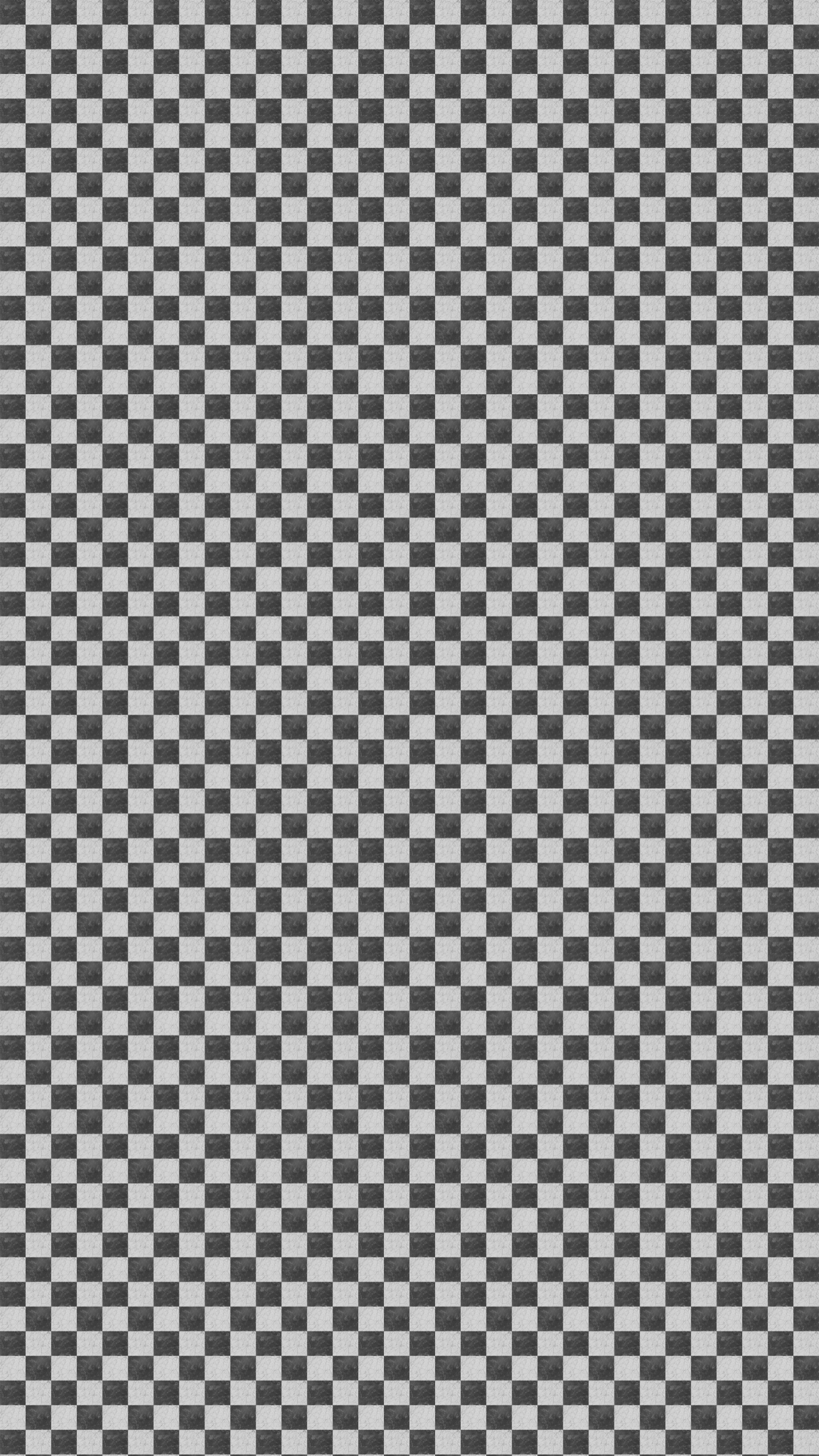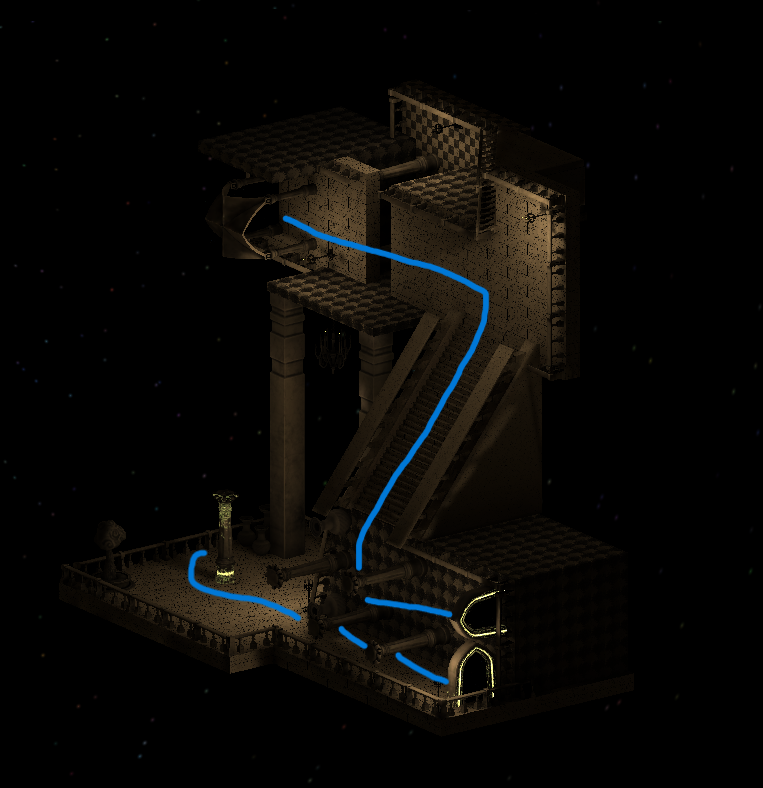
Night of the Songbirds was created for the Ubisoft Game Lab Competition in 2024. Basically, this is a 10-week long competition between a bunch of Canadian universities (plus us), to create a game that fits an assigned theme and various criteria. For this year, the theme was dream. Additionally, our requirements were that it was online two-player, that there was an AI element (like enemies, not ChatGPT, they clarified that), and that there was an element of the game that transfers to the next play session. With those restrictions in place, our team, Red Clover Interactive, set out to make a game, being advised by two Ubisoft developers.
For our game, we were inspired by the various drawings of M.C. Escher, specifically Relativity and Dream. We liked the non-Euclidean pathways and gravity-swapping, and wanted to incorporate that design into our game. Looking at a bunch of different games for inspiration and brainstorming, we ultimately decided that fast-paced gameplay would lead to a lot of disorientation, so we decided that it would be best to make a stealth game, which would encourage slower movement in combination with having the required AI. As for our persistent mechanic, we decided to have a sort of hide/seek mode in our game, where one set of players would be in charge of “hiding” sun fragments on their choice of pedestals. Bringing these sun fragments back to the center would be the goal of the next group of players, thereby creating a complete game loop. To emphasize this objective, we wanted the entire world to change color when the goal was complete, going from a black and white world to a blue and violet one.
We got started using Unity, because we had the most experience working with that engine. We had three level designers on the team, so I volunteered to temporarily bounce around and work as a more generalist designer, helping out where I was needed. During the first couple of weeks, once we got the gravity system working, I implemented a tactical lean system, crouching, visualized sound cones that the AI could hear and move to, and a waypoint system.
During our testing sessions though, we ran into issues with our core game loop. Players were getting frustrated, getting spotted from impossible angles and having the enemy AI chase them through portals. We were getting a lot of positive feedback on mechanics and visuals, but people seemed to not like the game loop itself. Reflecting on this, we decided to simplify the game loop substantially, removing the stealth and trading it for a loop where the AI is protecting the sun fragments, and one player must lure the AI out while the other runs to grab the fragment. This was the right decision in the end, but it resulted in a lot of my generalist work being scrapped later in development. Eager to do some more work, I volunteered to implement all of the animations in-engine, because we lacked a specific character animator. I had no experience doing this, but it seemed like a fun challenge, and it would help lift the weight off of our two artists’ shoulders. After accomplishing that, I asked our other two level designers if I could make the tutorial level, and they agreed.
One of the other requirements for Ubisoft was that the game is about 10 minutes long, so being able to teach the players all of the non-Euclidean mechanics within the first couple of minutes proved to be very difficult. In order to accomplish this, I made a list of all the things the players needed to learn before going into the main area:
Movement
Interaction
Crouching
Dashing
Portals
Gravity Switching
Hiding/Seeking
In the first area, I wanted to teach players how to move around, in addition to how to interact. In game, there is a gate that prevents players from going into the gazebo, forcing them to explore the area more. A pop-up tutorial text will teach them how to interact with the levers (in purple), and the players must figure out that they both need to pull the levers simultaneously in order to progress. Inside of the gazebo, there is a pillar, which when walked around will transport the player to a new location. I wanted to tease the player about the non-Euclidean potential by having them be on opposite sides of the area, with the pillar in between. If the player tries to look to the other side, they will see a pot from the next area, as opposed to their partner, making them wonder where they went.
The second area was meant to teach the player about crouching, portals, and gravity switching, and I think this area ended up being my best. In earlier tests of the level, I ended up putting columns on the wall so close to the ground that the player needed to crouch to get under it. This accident inspired me to make it a feature of the area, where the player would have to interact with these columns both through crouching and moving around them. From the starting position, the players have to crouch under the pillars, and after that they encounter the first teleporting door. The main thing that I wanted this door to show is the fact that it teleports and changes gravity. This meant having them side by side was crucial. By having one player walk through the doorway first, and having them appear sideways to the player on the ground, reinforced our game’s idea instantly. When testing, I audibly heard people say “oh” and “okay I get it!” when they got to this section with someone else. I’m really proud of this concept, and I think it’s the best part of this tutorial. From there, the players must go down a flight of steps, where they must learn to dash to get across a small gap into the next gazebo. If the player fails, then there is a small relatively dark area, which indicates that it’s a safe spot, but nothing of importance is down there.
The final area was meant to teach the players about the sun fragments, and depending on the game state, prompting the players to either return the fragments to the centerpiece (left) or place the fragments on the pedestal (right). While the players do this, an AI enemy (which we called Jesters) patrols the sideways area. The goal for the players is for one of them to lure the Jester towards them, while the other one moves around to grab/place the sun fragment. This worked decently well, however there was a bug that resulted in the Jester moving through the portal and spawn camping the checkpoint. By the time we recreated this bug, it was too late, and we had to submit our build as is. I think besides that bug, however, this section of the level communicated the goals that it was meant to, and prepared players for the main environment ahead.
After 10 long weeks, we presented Night of the Songbirds at Ubisoft Montreal, where it was showcased for both the judges, public, and other college students. We got to talk and network with lots of Ubisoft devs, and finally met our Ubisoft advisors in person. Later on, we got nominated for Best Technical Challenge and Innovation, but we unfortunately lost. However, I think the challenges and experiences that I got participating in this competition more than make up for whatever kudos I could’ve gotten from that. I am incredibly proud of my team and the work that we were all able to accomplish, and I know we gave it our all.
-
I was able to create a tutorial that communicated everything the player needed to know in a very short amount of time. Players immediately understood the mechanics of the game, and went into the main area comfortable and ready.
-
During this project, because I wasn’t the sole level designer, I ended up wearing a lot of different hats, and bouncing around helping people on my team. Besides feeling good about helping people, taking on some many new challenges built up my experience and confidence as a new developer.
-
Halfway through development, we made the difficult decision to dramatically change our genre, resulting in a lot of my work being axed. This was of course upsetting, but I think we made the right decision in the end. I’m proud of the work that I did, and that I was able to let go of it for the greater enjoyment of the game.
What I Did Right
-
Our team had a limited experience implementing AI enemies, so our final version was decently janky, resulting in them sometimes spawn camping the players at checkpoints, or just breaking out of the map altogether. I should have accounted for some of the AI quirks in my level design, as having something break within the first couple minutes is pretty bad for a first impression.
-
While a majority of players seemed to navigate the tutorial section pretty well, there was a small subset of player that ended up disoriented and moving backwards through the space. It would have probably been better to close off previous areas once both players went past, but I was too worried about bugs where one player was permanently separated from the other.
-
When presenting to Ubisoft, we ran into issues with a bunch of other student games running on the same network, resulting in some massive latency spikes and occasional network crashes. Given my cybersecurity background, I should have looked into that possibility, and tried to mitigate those problems to the best of my ability.
What I Did Wrong
-
While I am overall proud of the tutorial level that I made, there are still some things that I wish I could’ve made better. Besides preventing backtracking, I think the final tutorial section could have used another pass. I probably would’ve flipped the sideways section so that the pedestal and enemy were always in view, as opposed to it being obscured.
-
It would probably have been worth spending some time trying to break apart the props into smaller assets that could be assembled with tools. As an example, the railings that we created were a fixed length, resulting in me having to copy paste massive amounts of railings to cover the area. Investing in modular assets could have saved us a fair amount of time and frames.
-
I think there was an opportunity to reinforce the game loop of the world changing by having the world change color in the tutorial as well. This would have cemented the game loop in the players’ minds, and given them an even clearer goal entering our massive main area for the first time.














